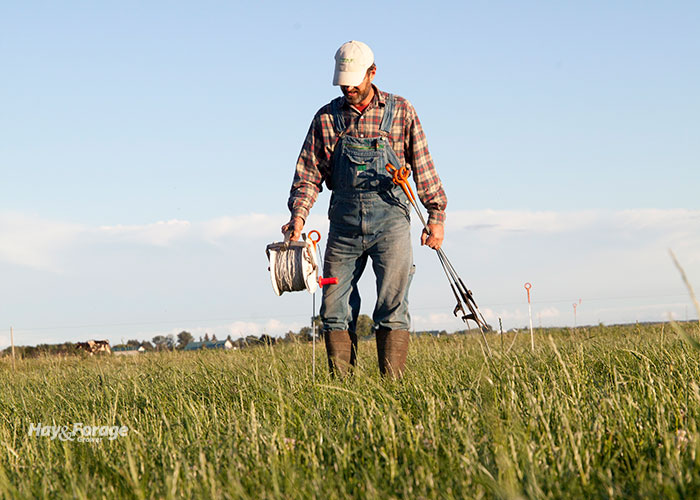
Matt Poore uses more than his head when allotting forage for the next pasture move. He also uses his feet, or more specifically, his steps.
The well-known North Carolina State University animal scientist and chairman of the Alliance for Grassland Renewal also operates a cow-calf operation in Halifax County, Va., where he routinely moves cattle to new paddocks bounded by temporary polywire.
“The most critical aspect of adaptive grazing management is to target short grazing bouts at high animal density and then allow the forage a long rest period,” Poore opines. “When plants are allowed to rest after being grazed, they can use their carbohydrate stores and photosynthesis in residual green leaves to regrow quickly, assuming the grazing animals are not there to nip off the new growth before it can really make a start.”
Pasture allocation is a function of available forage, desired forage residual, the number and type of animals being grazed, and forage intake.
Poore explains that a percent of body weight is used to estimate animal intake, with most cattle groups consuming between 2% and 2.5% of their body weight. For example, 20 head of 1,000-pound cattle eating 2.5% of their body weight will need 500 pounds of dry matter every day.
“If we want good individual animal performance, a 75% utilization rate might be our goal, meaning that we will need to offer the animals 667 pounds of available forage,” Poore explains. “If the pasture is estimated to have 2,000 pounds per acre of available forage, then we need to allocate 1/3 of an acre.”
An easier way
Conventional theory dictates that pasture layout be done in units of square feet, using the basic knowledge that there are 43,560 square feet per acre. Hence, if 1/3 of an acre is our goal, we need 14,375 square feet. Assuming the width of the pasture is 225 feet, some basic math dictates the other dimension needs to be 64 feet (14,375 ÷ 225 = 64), or about 21 3-foot steps.
Dealing with all these 3-foot increments got Poore to thinking that he could simplify the math by working in square yards. He determined that there were 4,840 square yards in an acre. Somewhat smaller numbers made calculations easier to do in his head and eventually negated the need for a pocket calculator. His 1/3 of an acre became 1,613 square yards instead of 14,375 square feet.
“One additional complication for me is that, as I age, a 3-foot pace is more difficult to achieve without really stretching,” Poore admits. “Again, in a moment of insight, I realized it didn’t matter how long my pace was as long as it was consistent, and I knew how many of my squared paces were in an acre.”
With a more comfortable pace of 32 inches, he determined that there were 5,400 “Poore squared paces” in an acre. This is a number that’s divisible by 2, 3, 4, 5, 6, 8, 9, and 10, making head calculations even easier.
Poore reminds pasture managers that the estimate of the amount of pasture to allocate is simply a starting point; it needs to be adjusted as the animals are moved.
“If animals are consistently given less than they need with less residual than you planned, animal intake and performance will be reduced, and the plants will be grazed too short,” Poore says. “If you give more than they need, the animal performance will be good, but you will leave more residual than you planned. With each move, the grazier needs to critically evaluate the previous allocation and make adjustments up or down.”

